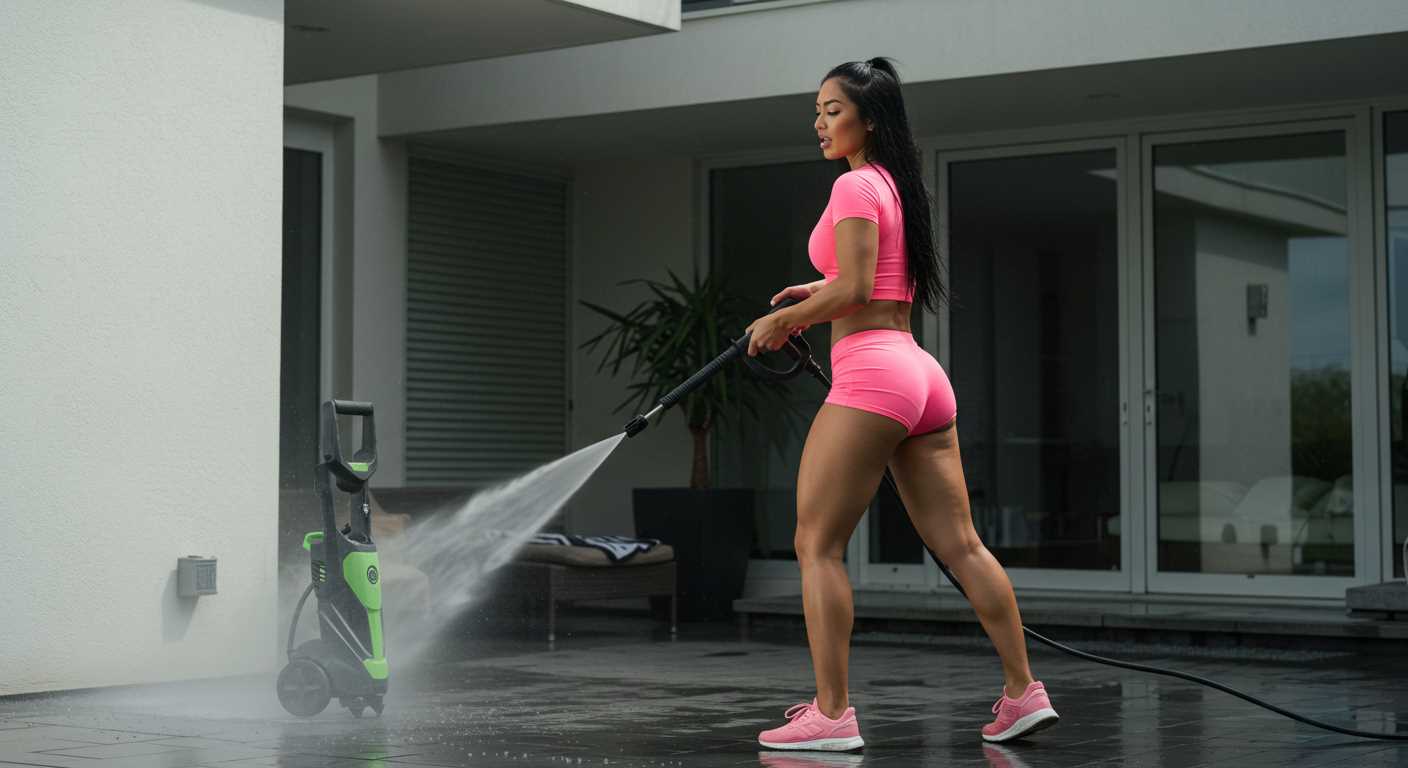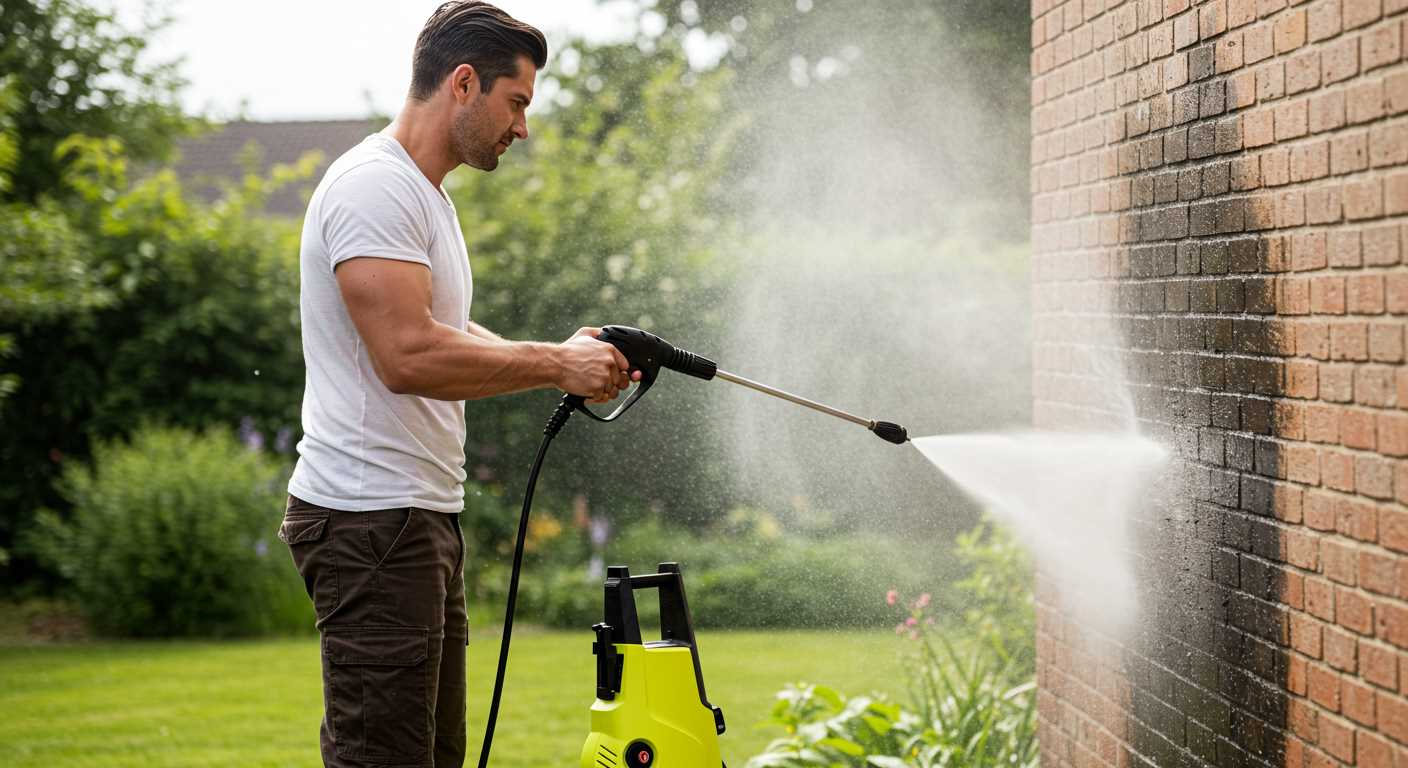



To achieve the optimum concentration for your chosen cleaning solution, combine one part of the cleaner with three parts water. This ratio maximises effectiveness while ensuring the safety of surfaces being treated.
Using a measuring cup or a clear container, accurately measure out the components before pouring them into your sprayer. Stir gently but thoroughly to ensure an even mixture, preventing any undissolved granules from clogging the nozzle during use.
Always refer to the manufacturer’s recommendations on the product label. Depending on the degree of staining or the type of surface, you may need to adjust the mixture to suit particular cleaning challenges.
Testing your mixture on a small, inconspicuous area is wise, as different surfaces may react differently to the combined solution. This precaution allows you to avoid potential damage and to gauge effectiveness before tackling larger areas.
Lastly, remember to store any unused mixture in a labelled container, keeping it out of reach of children and pets. Proper storage extends the lifespan of the solution and maintains its cleaning power for your next project.
Steps for Preparing Cleaning Solution Concentrate
Begin by checking the manufacturer’s instructions on the concentrate bottle for specific mixing ratios. A common guideline involves a mixture of one part cleaner to ten parts water, but always verify as it can vary by brand.
Utilise a clean bucket, ensuring it is free from any residues of previous substances that may interfere with your mix. Add the correct amount of cleaning concentrate according to the specified ratio.
Next, measure the required volume of water. It’s advisable to use warm water, as it can enhance the performance of the cleaning solution. Gradually pour the water into the bucket, mixing gently with a stir stick to ensure thorough blending without creating excessive foam.
Once combined, allow the solution to sit for a few minutes to ensure it’s well-blended before transferring it to the reservoir of your cleaning equipment. This pre-mixing can prevent clogging and ensure consistent application.
Cleaning solution should not be stored for extended periods; use it within a few hours to maintain its efficacy. Dispose of any unneeded mixture responsibly, following local disposal guidelines. Proper preparation maximises cleaning power while ensuring safe operation of your equipment.
Choosing the Right Cleaning Agent for Your Pressure Equipment

Select a formula that suits the surface you intend to clean. For exterior walls, a biodegradable option works well, minimising environmental impact while ensuring effectiveness.
- Concrete and Masonry: Use heavy-duty solutions designed to tackle tough stains such as oil, grease, and mildew.
- Vehicles: Select specialised automotive cleaners that are safe for paintwork and effective against road grime.
- Wood Surfaces: Opt for a gentle, environmentally-friendly cleaner to avoid damaging the wood’s finish.
- Decks and Patios: Consider a solution specifically formulated for outdoor living areas, often combining mould and mildew inhibitors.
Read product labels closely to ensure compatibility with your equipment. Some formulations may be too corrosive for certain materials or could damage internal components of your device.
- Check for compatibility with your specific model.
- Ensure it’s designed for the types of surfaces you’ll be cleaning.
- Consider concentrated versus ready-to-use options based on your needs.
Finally, understand the dilution ratio recommended by the manufacturer. Following these guidelines will ensure optimal performance and longevity of your cleaning equipment while achieving outstanding results.
Understanding the Correct Dilution Ratios
The correct mixing ratios are critical for achieving optimal cleaning without damaging surfaces. For a typical concentrated formula, a common ratio is 1:10 for light tasks, while a stronger solution of 1:4 may be necessary for stubborn grime. Always consult the manufacturer’s guidelines for specific recommendations.
For residential uses, aiming for a dilution of 1:5 works well for general cleaning purposes on patios or vehicles. In comparison, commercial-grade materials might require an even more concentrated mix, around 1:2, to tackle professional applications effectively.
It’s advisable to conduct a patch test on a small area to ensure the potency is suitable for the surface. If there’s any adverse reaction, adjust the mixture accordingly. Use a measuring cup or a marked container to ensure accuracy in your mixture, and keep a record of the ratios that yield the best results.
Don’t forget the importance of water quality; using soft water can enhance the performance of your cleaning solutions. Hard water can reduce effectiveness and lead to unsightly residues.
Tools Required for Diluting Cleaning Solution
Gather the following tools before you prepare your cleaning mixture:
- Measuring Cup – A clear measuring cup enables accurate measurement of liquid ingredients. Opt for one with both metric and imperial measurements for convenience.
- Mixing Container – Use a large, sturdy bucket or container to mix the solution thoroughly. Ensure it is clean and free from any residues that could affect the cleaning efficiency.
- Stirring Tool – A long stirring stick or a whisk is necessary for blending the components evenly. A dedicated cleaning brush can also work well.
- Funnel – This aids in pouring the mixed solution into your equipment without spills, ensuring you don’t waste any cleaning agent.
- Protective Gear – Safety gloves and goggles are essential to protect your skin and eyes from splashes, especially when handling concentrated formulas.
- Water Source – An easily accessible water source is critical to achieve the desired mixture consistency and prepare your cleaning liquid correctly.
Optional Tools
Consider these additional tools for a more streamlined process:
- Labeling Stickers – Label containers with the type of mixture and any necessary safety information for future reference.
- Spray Bottle – For application, a spray bottle allows for an even and controlled distribution of the solution on surfaces.
Step-by-Step Guide to Diluting Detergent
To achieve the right mix of cleaning solution, begin by gathering your materials: a measuring container, water, and your chosen cleaning agent.
1. Measure the water first. Choose the amount based on the size of your project. For most tasks, one litre is sufficient.
2. Pour the required amount of clean water into your mixing container. It’s important to start with water to ensure the agent blends well without clumping.
3. Next, consult the product label of your cleaning agent for the recommended mixing ratio. Common ratios are typically between 1:4 to 1:8, depending on the concentration needed for the task.
4. Using your measuring container, add the appropriate amount of agent to the water. If the recommended ratio is 1:4, for example, add 250ml of the solution to every litre of water used.
5. Mix thoroughly. Stir the solution gently to combine the water and cleaning agent uniformly. Avoid vigorous shaking which may create excess bubbles.
6. Once mixed, pour the solution into the dispenser tank of the cleaning equipment, ensuring it’s securely in place.
7. Test on a small, inconspicuous area before full application. This will confirm compatibility and effectiveness on the surface being cleaned.
8. If satisfactory, proceed with your cleaning task, maintaining the dilution ratios as defined. Clean the container and any spills promptly to avoid residue build-up.
Common Mistakes to Avoid When Diluting
.jpg)
Avoid incorrect measurements. Using the wrong proportions can lead to ineffective cleaning or damage to surfaces. Always refer to the manufacturer’s guidelines or labels for precise ratios.
Never mix different cleaning agents. Combining chemicals can produce harmful reactions and decrease effectiveness. Stick to one product at a time to ensure safety and reliability.
Unattended Dilution Process
Don’t leave your mixture unattended. If you step away while mixing, there’s a risk of contamination or accidents. Stay present to manage the dilution process and ensure everything is properly blended.
Using Inappropriate Containers

Utilise suitable containers. Some plastics can react negatively with certain chemicals, affecting safety and effectiveness. Check that all tools are compatible with the substances you’re handling.
| Mistake | Consequence |
|---|---|
| Incorrect ratios | Ineffective cleaning or surface damage |
| Mixing different products | Potentially dangerous chemical reactions |
| Leaving unattended | Risk of contamination and accidents |
| Using unsuitable containers | Reactions that compromise safety and mixture quality |
How to Safely Store Diluted Cleaner
Always transfer the mixed solution into a sturdy, labelled container made from resistant materials such as HDPE (high-density polyethylene) to prevent any degradation over time. Make sure the container is tightly sealed to avoid contamination and evaporation. Storing in a cool, dry place away from direct sunlight is crucial, as heat and light can alter the composition and effectiveness of the solution.
Container Labelling and Management
Label your containers clearly with the contents and the date of preparation. This ensures you track the shelf life and prevents accidental use. It’s recommended not to keep the mixture for more than a month, even if the container is sealed. Regularly check for any signs of separation or changes in colour, which may indicate that the mixture is no longer effective or safe for use.
Safety Precautions
Always store away from any food or drink to eliminate the risk of contamination. If you have children or pets, choose a location that is out of their reach. Wearing gloves and goggles when handling or transferring the cleaner can prevent skin irritation or accidental splashes in the eyes. Dispose of any waste according to local regulations to ensure environmental safety.
Tips for Applying Diluted Cleaners with a Pressure Cleaning Unit

Start from the bottom and work your way up. This technique prevents streaking and ensures an even application across surfaces. Make sure to keep the nozzle at least two feet away from the surface to avoid damage while achieving adequate coverage.
Use the Right Nozzle
Select a wider spray nozzle for applying the mixture. A 25-degree nozzle is typically effective for most surfaces, allowing the solution to be evenly distributed without causing harm.
Apply in Sections
Divide large areas into manageable sections. This helps to control the application better and ensures that the solution can dwell for the correct amount of time before rinsing, enhancing its cleaning properties.
Monitor your flow rate. Adjust the dial on the unit to maintain optimal output, ensuring you’re not over-saturating any area. This attention to detail can significantly impact performance and results.
After application, allow the mixture time to penetrate and break down dirt. Follow the manufacturer’s recommendations for dwell time before rinsing thoroughly.
Finish with a thorough rinse using clear water to remove any residue, ensuring surfaces are clean without streaks or spots left behind.
FAQ:
What type of detergent should be used with a pressure washer?
When using a pressure washer, it’s important to select a detergent specifically designed for pressure washing. These detergents are formulated to work with the high-pressure system, providing effective cleaning while preventing damage to surfaces. Look for products labelled as compatible with pressure washers and that suit your cleaning task, whether it’s for decks, driveways, vehicles, or siding.
How do I properly dilute pressure washer detergent?
To properly dilute pressure washer detergent, check the manufacturer’s instructions on the label for the recommended dilution ratio. This is usually a specific ratio of detergent to water, often 1 part detergent to 5 parts water, but can vary. Use a clean container to mix the detergent and water. After mixing, you can fill the detergent tank of your pressure washer or apply it using a soap nozzle attachment. Always ensure that you mix only the amount you need for your cleaning task to avoid wasting detergent.
Can I use regular dish soap in my pressure washer?
Using regular dish soap in a pressure washer is not recommended. Household soaps lack the necessary detergents and surfactants needed for effective cleaning at high pressures. Additionally, they may produce excessive foam, leading to clogs and malfunctions in the pressure washer. It’s better to stick to detergents specifically designed for pressure washing to ensure safety and performance.
What safety precautions should I take when diluting and using pressure washer detergent?
When diluting and using pressure washer detergent, it’s vital to wear protective gear such as gloves and goggles to avoid skin and eye irritation. Work in a well-ventilated area to avoid inhaling fumes. Always read the safety information on the detergent label and follow the manufacturer’s guidelines for mixing. Keep the detergent away from pets and children, and store any leftover detergent in a secure location. Finally, ensure that all mixing is done away from the pressure washer to prevent spills on the machine.








